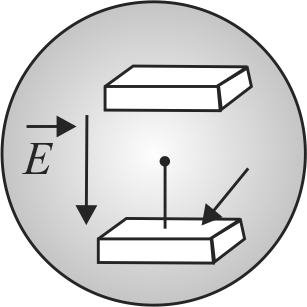357662
When a certain metallic surface is illuminated with monochromatic light of wavelength
357664
Light of wavelength
357665 The collector plate in an experiment on photoelectric effect is kept vertically above the emitter plate. Light source is put on and a saturation photo-current is recorded. An electric field is switched on which has a vertically downward direction, then
357662
When a certain metallic surface is illuminated with monochromatic light of wavelength
357664
Light of wavelength
357665 The collector plate in an experiment on photoelectric effect is kept vertically above the emitter plate. Light source is put on and a saturation photo-current is recorded. An electric field is switched on which has a vertically downward direction, then
357662
When a certain metallic surface is illuminated with monochromatic light of wavelength
357664
Light of wavelength
357665 The collector plate in an experiment on photoelectric effect is kept vertically above the emitter plate. Light source is put on and a saturation photo-current is recorded. An electric field is switched on which has a vertically downward direction, then
357662
When a certain metallic surface is illuminated with monochromatic light of wavelength
357664
Light of wavelength
357665 The collector plate in an experiment on photoelectric effect is kept vertically above the emitter plate. Light source is put on and a saturation photo-current is recorded. An electric field is switched on which has a vertically downward direction, then
357662
When a certain metallic surface is illuminated with monochromatic light of wavelength
357664
Light of wavelength
357665 The collector plate in an experiment on photoelectric effect is kept vertically above the emitter plate. Light source is put on and a saturation photo-current is recorded. An electric field is switched on which has a vertically downward direction, then
